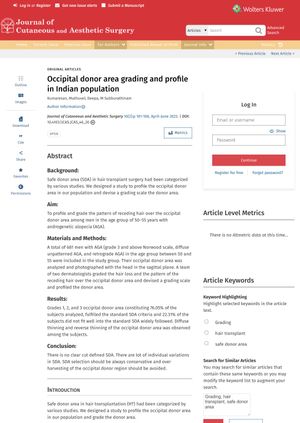TLDR The conclusion is that a safe donor area for hair transplants varies and should be chosen based on individual factors like race, future hair loss, family history, and specific thinning patterns.
The study "Occipital donor area grading and profile in Indian population" involved 681 men aged 50-55 with androgenetic alopecia (AGA). The researchers developed a grading system for hair loss in the occipital donor area, which is often used in hair transplants. The grading system ranged from 1 to 5, with 1 being the least severe and 5 being the most severe. The results showed that 29.07% (198) had a grade 1 pattern, 26.57% (181) had a grade 2 pattern, 22.02% (150) had a grade 3 pattern, 18.20% (124) had a grade 4 pattern, and 4.11% (28) had a grade 5 pattern. Additionally, 0.6% (4) had reverse thinning (RT) alone, 1.17% (8) had diffuse thinning (DT) alone, 7.63% (52) had DT in all grades, 22.02% (150) had RT in all grades, and 2.05% (14) had both RT and DT. The study concluded that there is no universally applicable safe donor area (SDA) for hair transplants, and that factors such as race, future hair loss progression, family history, and the presence of DT and RT should be considered when selecting a donor area.
 2 citations
,
January 2019 in “PubMed”
2 citations
,
January 2019 in “PubMed” The study concluded that certain areas of the scalp and beard are safe for hair transplant donor sites in Indian men.
17 citations
,
January 2018 in “Journal of cutaneous and aesthetic surgery” The article discusses debates on hair transplant techniques, safe donor areas, PRP use, and practitioner qualifications in hair restoration.
 14 citations
,
May 2014 in “Archives of plastic surgery”
14 citations
,
May 2014 in “Archives of plastic surgery” The position of the parietal whorl can predict safe donor areas for hair transplants in Korean men with male pattern baldness.
 88 citations
,
January 2013 in “Indian Journal of Dermatology, Venereology and Leprology”
88 citations
,
January 2013 in “Indian Journal of Dermatology, Venereology and Leprology” Minoxidil and finasteride effectively treat hair loss.
 29 citations
,
September 1997 in “PubMed”
29 citations
,
September 1997 in “PubMed” Follicular transplantation can greatly improve hair restoration if done with detailed planning and patient evaluation.
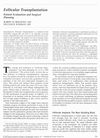 72 citations
,
September 1997 in “Dermatologic Surgery”
72 citations
,
September 1997 in “Dermatologic Surgery” Careful planning and patient counseling can lead to excellent hair transplant results, often in one or two sessions.
 May 2020 in “Hair transplant forum international”
May 2020 in “Hair transplant forum international” Most Indian men aged 50-55 have a safe area for hair transplants, but selection should be careful to avoid overharvesting.
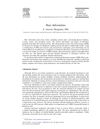 September 2004 in “Atlas of the Oral and Maxillofacial Surgery Clinics”
September 2004 in “Atlas of the Oral and Maxillofacial Surgery Clinics” Hair restoration surgery techniques can effectively treat scalp deformities and have evolved to provide natural-looking results.
 November 2023 in “Materials Today Bio”
November 2023 in “Materials Today Bio” Light therapy might help treat hereditary hair loss by improving hair follicle growth in lab cultures.
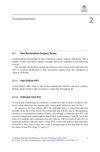 November 2018 in “Springer eBooks”
November 2018 in “Springer eBooks” Finasteride and minoxidil are effective, low-risk treatments for male hair loss, and patient education on these therapies is important.
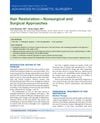 April 2021 in “Advances in Cosmetic Surgery”
April 2021 in “Advances in Cosmetic Surgery” Hair restoration can be achieved through non-surgical treatments like minoxidil, antiandrogens, phototherapy, and PRP procedures, or through surgical methods like hair transplantation. Continued treatment is needed to maintain results, and full results are visible after 12-18 months.
